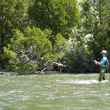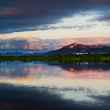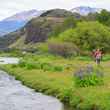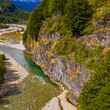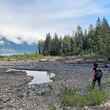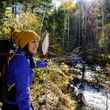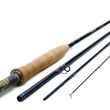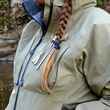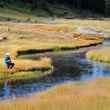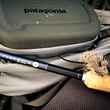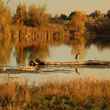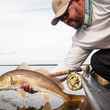I watch her movements become slow and deliberate as rustling leaves bring her to alert. An image of the oak tree reflects in her dilated pupils. Shaky hands testify to the adrenaline racing through her veins.
I whisper, "can you see it?"
There is no reply.
“It’s on the third branch up.”Searching eyes scrutinize leafy boughs. Whispered words tumble out in a ragged breath. “I see it,” she says.
I kneel behind her to take it all in. The camouflaged gun barrel circles in cool late-afternoon air. The circles tighten and she holds her breath.



